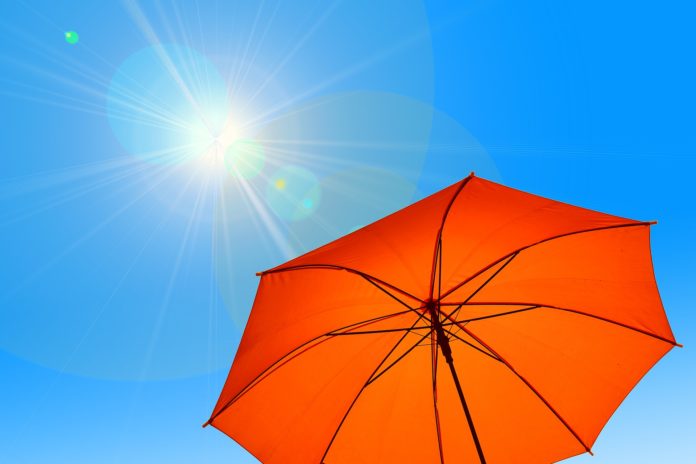AUBURN UNIVERSITY, Ala. – Alabama residents are no strangers to hot summer weather. The National Oceanic and Atmospheric Administration (NOAA) is predicting high temperatures throughout the nation over the July 19 weekend.
Heat safety is a very important aspect of Alabama summers. The Alabama Cooperative Extension System offers tips to ensure safety during a prolonged heat event.
Heat Safety
Individuals should begin by listening to local weather forecasts to determine if there are upcoming changes in temperature.
- Be aware of both temperature and the heat index. The heat index is the temperature the body feels when the effects of heat and humidity are combined. Exposure to direct sunlight can increase the heat index by as much as 15 degrees Fahrenheit.
- Discuss heat safety precautions with members of your household. Have a plan for wherever you spend time—home, work, and school—and prepare for the possibility of power outages.
- Check the contents of your emergency disaster kit in case a power outage occurs.
- Know those in your neighborhood who are young, elderly, sick or overweight. They are more likely to become victims of excessive heat and may need assistance.
- In dwellings without air conditioning, choose places to go for relief during the warmest part of the day.
- Be aware that people living in urban areas may be at greater risk from the effects of a prolonged heatwave than those living in rural areas.
- Train in first aid to learn ways to properly treat heat-related emergencies.
Respond appropriately
Make choices about outdoor activities according to the temperature and heat index. In some cases, cancellations of outdoor activities may be appropriate. It is also important to check on family, friends and neighbors who do not have air conditioning, who spend much of their time alone or who are more likely to be affected by heat.
- Drink plenty of fluids—even if you do not feel thirsty. Avoid drinks with caffeine or alcohol.
- Eat small meals and eat more often.
- Avoid extreme temperature changes.
- Wear loose-fitting, lightweight, light-colored clothing. Avoid dark colors.
- Slow down, stay indoors and avoid strenuous exercise during the hottest part of the day.
- Use the buddy system when working in excessive heat.
- Take frequent breaks when working outdoors.
Heat-related illnesses
Heat exhaustion, heat cramps and heat stroke are three common heat-related illnesses.
Heat cramps
Muscular pains and spasms in the legs or abdomen are usually called heat cramps. These are often an early sign that the body is having trouble with the heat.
To treat heat cramps:
- Get the person to a cool place and have them rest. Lightly stretch affected muscles and gently massage the area.
- Give an electrolyte-filled fluid—such as a sports drink—fruit juice, milk or water. Do not give the person salt tablets.
Heat exhaustion
Heat exhaustion is a more severe condition. This condition often affects athletes, firefighters, construction workers and factory workers. It also affects those wearing heavy clothing in a hot, humid environment.
Signs of heat exhaustion include:
- cool, moist, pale, ashen or flushed skin
- headache
- nausea
- dizziness
- weakness
- exhaustion
Move the person to a cool environment with circulating air. Remove or loosen as much clothing as possible and apply cool, wet cloths or towels to the skin. If the person is conscious, give small amounts of fluid every 15 minutes. However, if the person’s condition does not improve, if he or she refuses water, has a change in consciousness or vomits, call 9-1-1.
Heat stroke
Heat stroke is a life-threatening condition that usually occurs after a person ignores the signals of heat exhaustion. This condition develops when the body’s systems are overwhelmed by heat and begin to stop functioning.
Signs of heat stroke include:
- extremely high body temperature
- red skin, which may be dry or moist
- changes in consciousness
- rapid, weak pulse
- rapid, shallow breathing
- confusion
- vomiting
- seizures
If any of these symptoms develop, call 9-1-1 immediately. Home treatment is not sufficient in cases of heat stroke. Get the individual emergency medical care as soon as possible.
More Information
For more information, visit Alabama Extension online, or read other heat-related suggestions in the Emergency Handbook. It is also available for a free download on iBooks.




















